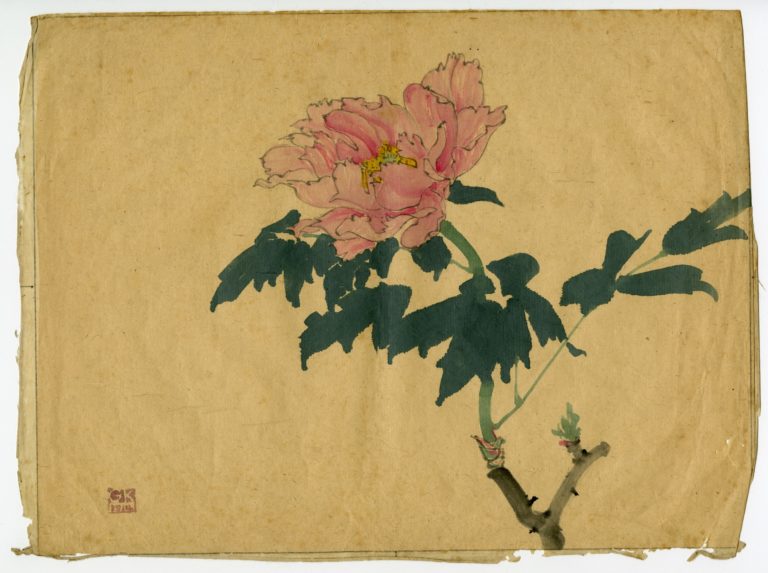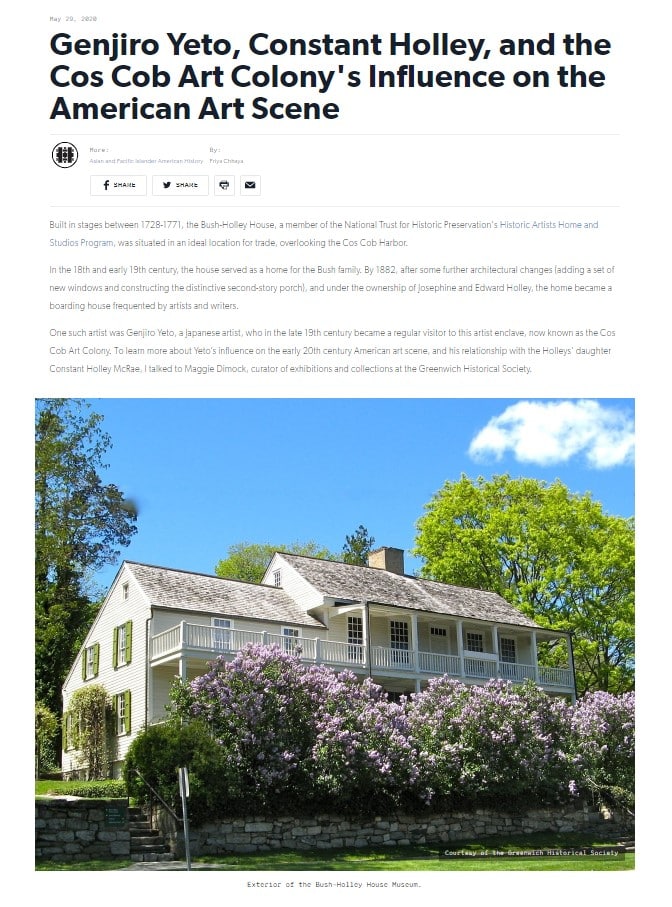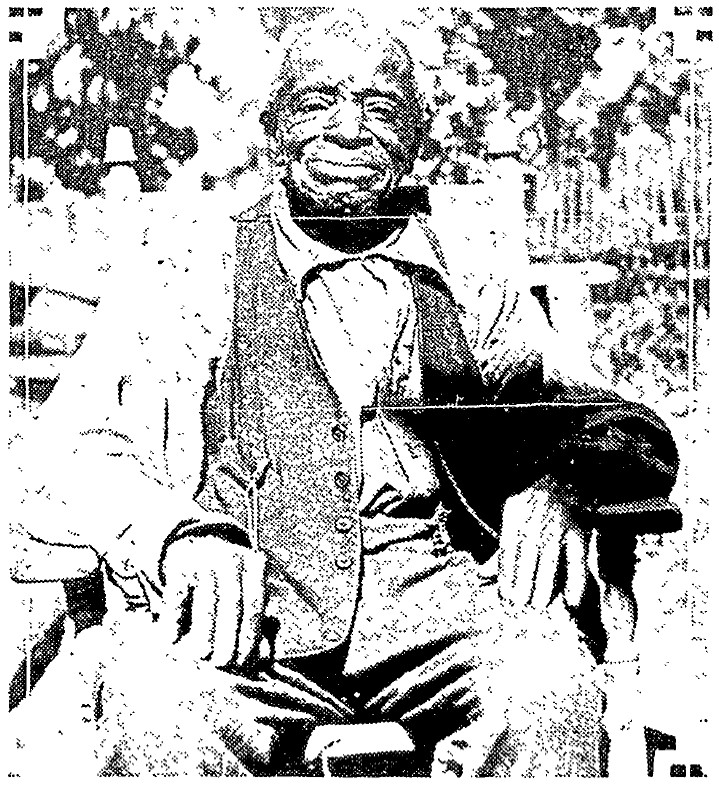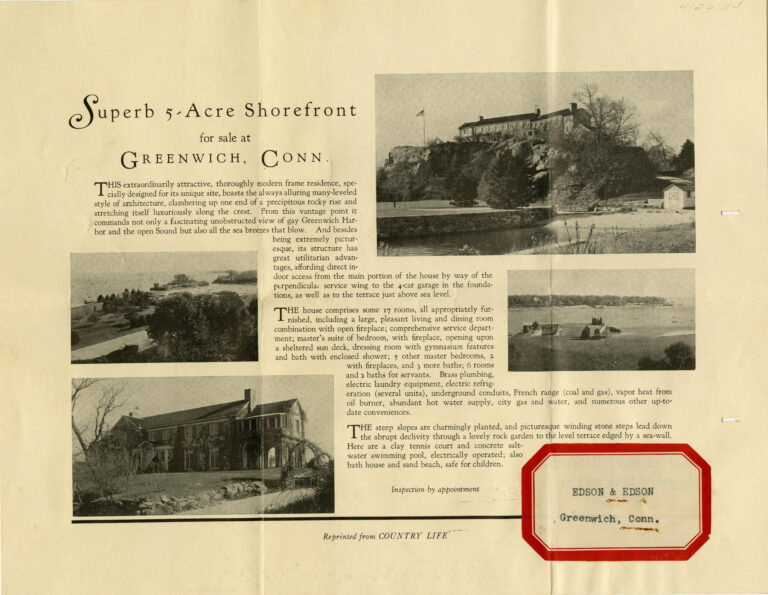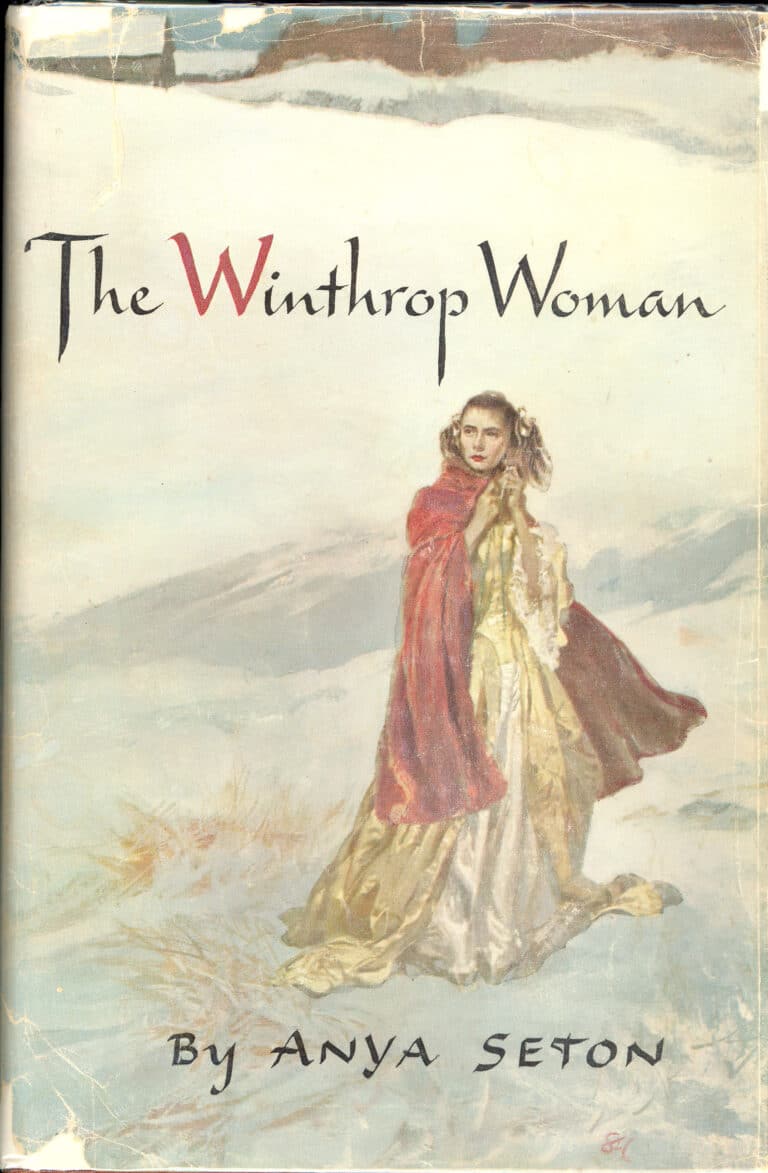May is Asian and Pacific Islander Heritage Month, celebrating the history and stories of Asians and Pacific Islanders in the United States. In recognition, the National Trust for Historic Preservation recently reached out to the Greenwich Historical Society to discuss the legacy of Genjiro Yeto (1867-1924), an accomplished Japanese-born painter and illustrator who played a key role in the formation of the art colony that thrived at the Holley boarding house in Cos Cob.
Visit the National Trust for Historic Preservation’s site to read our interview about how the Greenwich Historical Society interprets Yeto’s legacy at the Bush-Holley House, and learn details about his close relationship with Constant Holley MacRae.
The Greenwich Historical Society is proud to be part of the Historic Artist’s Homes & Studios network, a program of the National Trust for Historic Preservation.
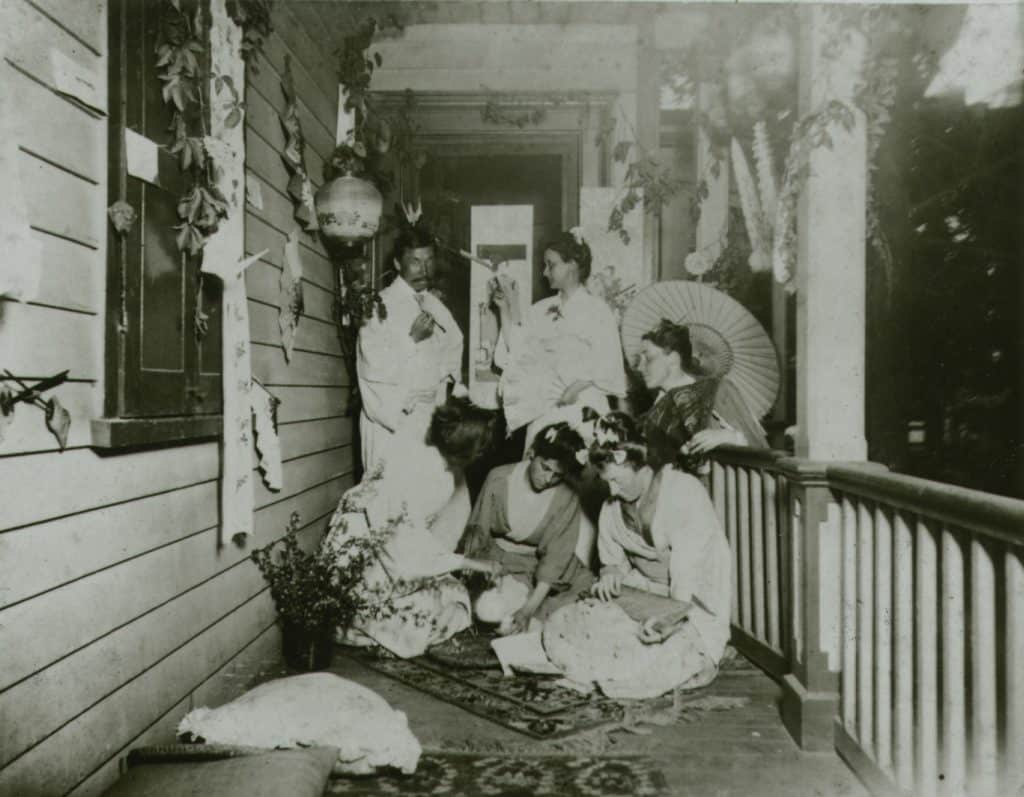
Greenwich Historical Society Photograph Collection.
Sharing Genjiro Yeto’s story with visitors is a critical aspect of our educational and interpretive program at the Greenwich Historical Society. Born in Arita, Japan to a family with ties to the porcelain painting business, Yeto came to the United States in 1890 at the age of 23 with plans to pursue a commercial career. After achieving a measure of success in business he shifted his focus to art, enrolling in 1895 as a student at New York’s Art Students League.
In New York, Yeto studied under Robert Baum, John Henry Twachtman and Kenyon Cox, finding particular resonance in Twachtman’s Japanese-inspired approach to landscape and composition. The summer of 1895 Yeto joined Twachtman’s summer outdoor painting class in the waterside village of Cos Cob and lived in a boarding house run by the Holley family, alongside many of his fellow students.
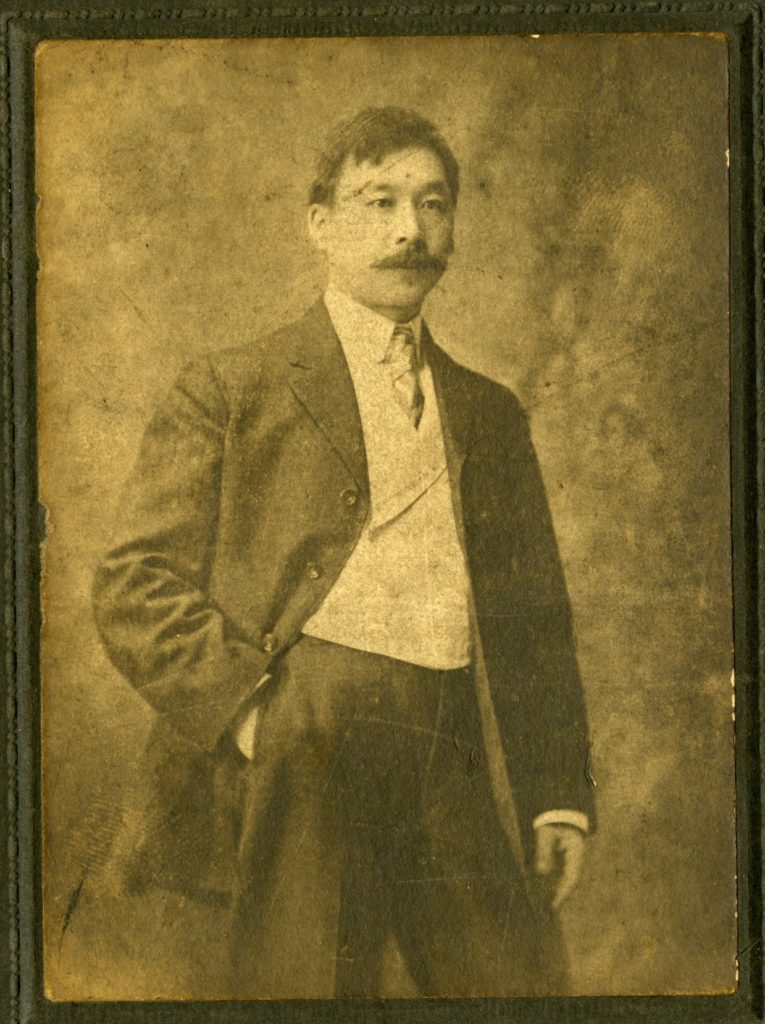
Greenwich Historical Society, Photograph Collection
In Cos Cob Yeto found camaraderie and lasting friendships with several American artists, including his close friend Elmer Livingston MacRae, who married Constant Holley in 1900 and made the Holley House his permanent home. Yeto was a regular presence at the Holley House for many years, and his love for both American and Japanese culture had a lasting influence on his fellow artists.
Inspired by Yeto, Constant Holley MacRae took up ikebana flower arranging, held tea ceremonies, and practiced origami, and the artists of the Colony as a whole embraced Japanese-style dress and décor, taking part in a widespread appreciation for Japanese culture that permeated American artistic society in the late-19th century.
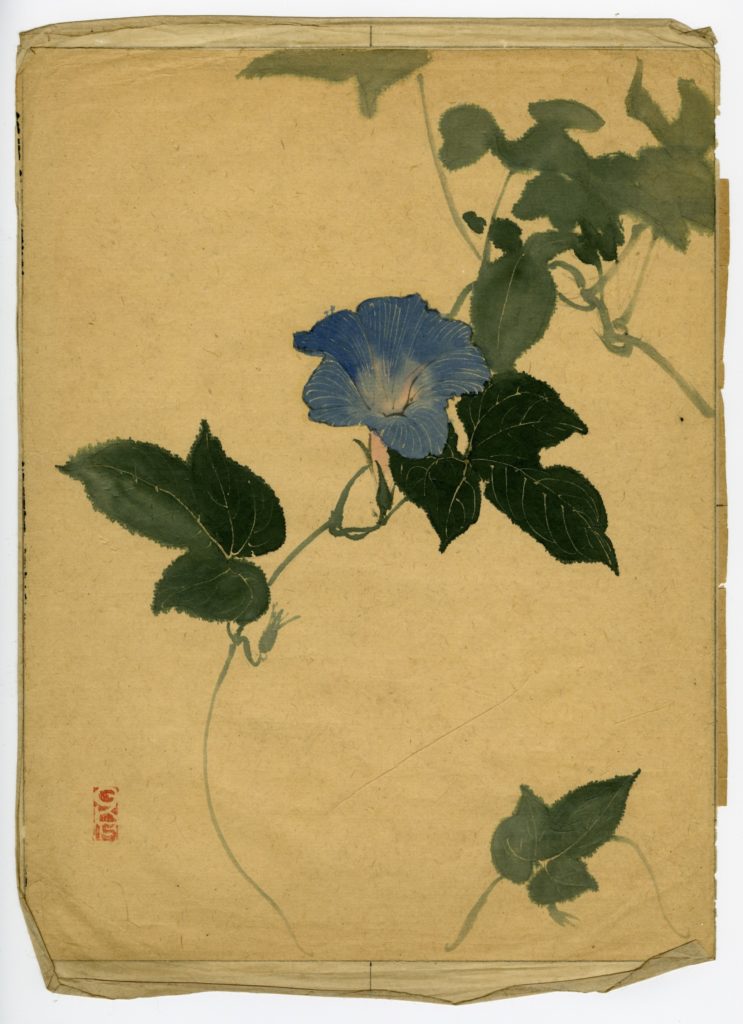
Greenwich Historical Society, Gift of Yukiko Tanaka in memory of her grandfather Genjiro Yeto/Kataoka
Through the late 1890s and early 1900s Yeto found success in the United State as a watercolor painter, chiefly specializing in elegant floral studies and genre scenes, and as an illustrator of books for children and adults. His work was exhibited widely including at the New York Watercolor Club, the National Academy of Design, and the Pennsylvania Academy of the Fine Arts. In 1900 Yeto was invited to act as a cultural consultant for the original Broadway production of Madam Butterfly.
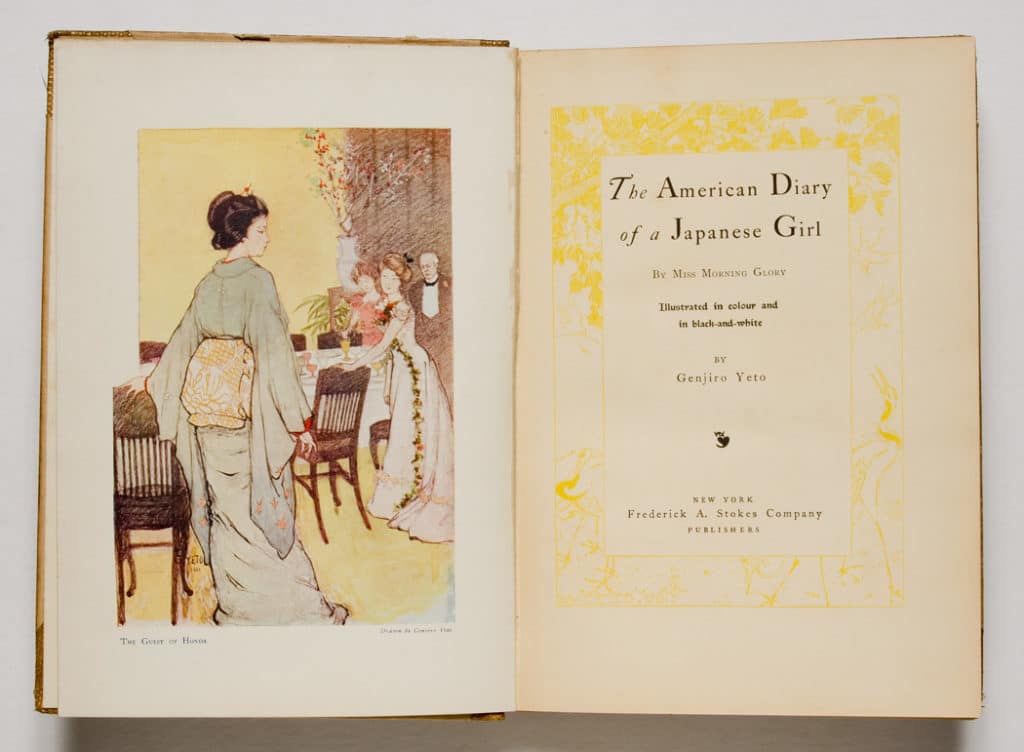
“Miss Morning Glory” was a pseudonym used by the Japanese writer Yone Noguchi.
Greenwich Historical Society, Gift of Susan G. Larkin.

Greenwich Historical Society, Museum Purchase with Donor Funds in memory of Noboru Uezumi
Yeto returned to Japan in ca. 1903, where he soon was married and had his first child. In the following decade he traveled between the United States and Japan several times, exhibiting paintings in America and accepting illustration work. Eventually he settled back in Japan permanently. Research on Yeto’s artistic career was limited for many years by confusion about the Romanticized spelling of his name – often recorded as “Gaingero” during his lifetime. Further, for reasons not understood by his American contemporaries, his family name of Yeto was adopted as young adult in Japan; his birth name was Genjiro Kataoka, which he reverted to using again later in life.
Readers interested in learning more about Yeto’s life and work may consult Susan G. Larkin’s excellent book The Cos Cob Art Colony: Impressionists on the Connecticut Shore (Yale University Press, 2000).

If you are interested in receiving a Japanese-language site guide to the Bush-Holley House, prepared by Noboru Uezumi please send an email to curator@greenwichhistory.org.
Maggie Dimock is Curator of Exhibitions and Collections at the Greenwich Historical Society.
